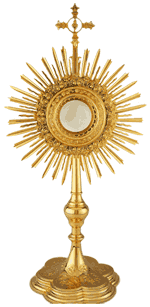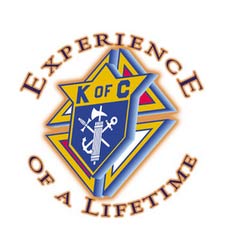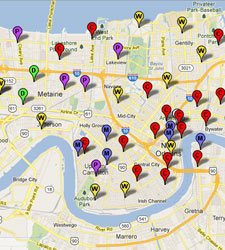The symbolism of the pelican feeding her young is rooted in a legend preceding Christianity that when food was scarce, the mother pelican would wound her breast with her beak and feed her young with her blood to prevent starvation. Given this legend, one can understand why the early Christians adapted it to symbolize our Lord, Jesus Christ. The pelican symbolizes Jesus our Redeemer who gave His life for our redemption and continues to feed us with His body and blood in the Holy Eucharist. The pelican is also part of our liturgical tradition. The image of the pelican is popular artwork for altar frontals, tabernacles and arches. In the hymn “Adoro te devote,” (written by St. Thomas Aquinas, whose feast day we celebrate on January 28, and translated into English by Gerard Manley … [Read more...]
Week of Prayer for Christian Unity
January 18 -25 The Dicastery for Promoting Christian Unity [DPCU] is pleased to publish the texts for the Week of Prayer for Christian Unity 2025. In the northern hemisphere, the Week of Prayer traditionally takes place from 18 to 25 January, while in the southern hemisphere, where January is often a holiday period, churches often celebrate the Week of Prayer around Pentecost. The theme of the Week of Prayer for Christian Unity 2025 is based on a text from the Gospel of John: "Do you believe this?" (John 11:26). The prayers and reflections have been prepared by the brothers and sisters of the monastic community of Bose in northern Italy. As usual, an international team appointed jointly by the DPCU and the Faith and Order Commission of the World Council of Churches worked with the … [Read more...]
The Christmas Proclamation
The twenty-fifth day of December. In the five thousand one hundred and ninety-ninth year of the creation of the world from the time when God in the beginning created the heavens and the earth; the two thousand nine hundred and fifty-seventh year after the flood; the two thousand and fifteenth year from the birth of Abraham; the one thousand five hundred and tenth year from Moses and the going forth of the people of Israel from Egypt; the one thousand and thirty-second year from David's being anointed king; in the sixty-fifth week according to the prophecy of Daniel; in the one hundred and ninety-fourth Olympiad; the seven hundred and fifty-second year from the foundation of the city of Rome; the forty second year of the reign of Octavian Augustus; the whole world being at peace, in the … [Read more...]
Feast of the Holy Family December 27
Consecration to the Holy Family O Jesus, our most loving Redeemer, who having come to enlighten the world with Thy teaching and example, didst will to pass the greater part of Thy life in humility and subjection to Mary and Joseph in the poor home of Nazareth, thus sanctifying the Family that was to be an example for all Christian families, graciously receive our family as it dedicates and consecrates itself to Thee this day. Do Thou protect us, guard us and establish amongst us Thy holy fear, true peace and concord in Christian love: in order that by living according to the divine pattern of Thy family we may be able, all of us without exception, to attain to eternal happiness. Mary, dear Mother of Jesus and Mother of us, by the kindly intercession make this our humble offering … [Read more...]
Poinsettias!
Poinsettias in the Sanctuary during Christmas can be purchased in the name of a deceased loved one whose names will be recorded in the bulletin and on the parish website. Thanks for helping us decorate the altar! … [Read more...]
No Gloria during Advent?
During Advent, we refrain from singing the “Gloria in Excelsis Deo / Glory to God in the Highest.” Why? Let’s start with some basic rules of liturgy set down by the Second Vatican Council in its Constitution on the Sacred Liturgy. Within the cycle of a year the Church “unfolds” the whole mystery of Christ, from the incarnation and birth until the ascension, the day of Pentecost, and the expectation of blessed hope and of the coming of the Lord (no.102). The church is to be particularly directed toward feasts of the Lord that point to salvation (no.108). In other words, a principle in ritual is to celebrates “feasts” and “fasts” in different ways so as to allow the mysteries of Christ to be made clear by the celebration. The Resurrection of Christ takes pre-eminence and is … [Read more...]
Friends of St. Alphonsus Creche Exhibit
The annual St. Alphonsus Cre?che Exhibit will begin on Sunday, Sunday, November 26 to Sunday December 3 at St. Dominic Church in Lakeview There will be over 100 cre?che's from around the world. For more information call Blanche Comiskey at 504-235-2931, or the FOSA office at 504-524-8116. … [Read more...]
All Hallows’ Eve
Halloween or All Hallows' Eve is not a liturgical feast on the Catholic calendar, but the celebration has deep ties to the Liturgical Year. These three consecutive days ”” Halloween, All Saints Day and All Souls Day ”” bring to mind the Communion of Believers. On earth we are called the “Church Militant,” because we are striving to get to heaven. We pray for the “Church Suffering,” the souls in Purgatory, especially on All Souls Day (and even the entire month of November). We also honor and ask the intercession of the “Church Triumphant,” those souls, whether canonized or uncanonized, who are in Heaven. In England, saints or holy people are called “hallowed,” hence All Saints Day was “All Hallow's Day.” The evening before the feast became popularly known as “All Hallows' Eve” or even … [Read more...]
St. Pius of Pietrelcina
September 23, 2023 Saint Padre Pio was born Francesco Forgione on May 25, 1887 in Pietrelcina, Italy. He was the son of farmers Grazio Forgione and Maria Giuseppa Di Nunzio, and had three younger sisters and one older brother. As a child, Francesco worked on his family farm by taking care of a small flock of sheep that the family owned, but by the time he was five years old, Franceso had already decided to dedicate his life to God. In January of 1903, at the young age of 15 he was allowed to enter the novitiate with the Capuchin Franciscan Friars in Morcone where he took on the name “Friar Pio.” Once he joined the Friary of St. Francis, he had several bouts of serious illness and religious ecstasy. Friars would report strange noises coming from his cell. Friar Pio frequently … [Read more...]
Feast Days
St. Monica Feast Day – August 27 St Augustine Feast Day – August 28 St. Augustine, a Roman African, was born in 354 in Thagaste (present-day Algeria) to a pagan father named Patricius and a Christian mother named Monica. At the age of 11, Augustine was sent to school at Madaurus, where he became familiar with Latin literature, as well as pagan beliefs and practices. At age 17, he went to Carthage to continue his education in rhetoric. Although raised as a Christian, Augustine left the church to follow the Manichaean religion, much to the despair of his mother. As a youth Augustine lived hedonistic lifestyle and had a longtime affair with a young woman in Carthage from whom was born his son Adeodatus. Although his mother constantly prayed for him to become a Christian, Augustine's … [Read more...]




